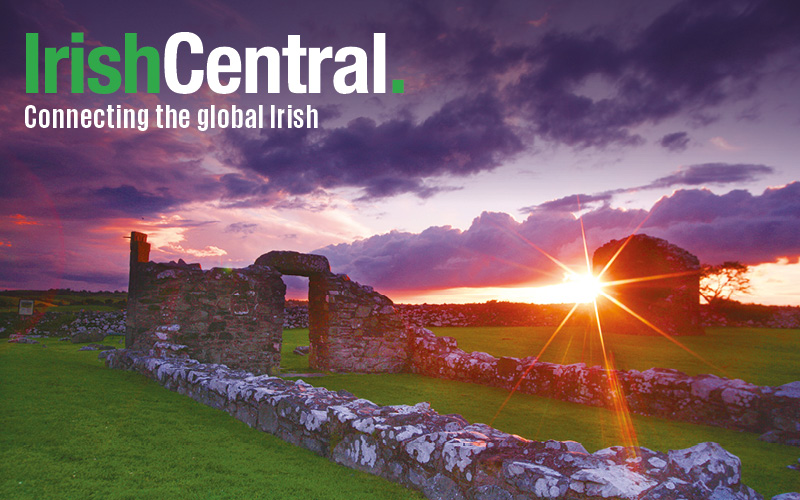A search for the 1,490 former tenants forced to emigrate from the estate of Major Denis Mahon at Strokestown Park was the inspiration of the Great Famine Voices Roadshow, now in its second year and second tour of North America.
The initial study, conducted by Professor Mark McGowan and his research team at the University of Toronto, lay the groundwork for an expanded search for stories of the Famine, Europe’s greatest humanitarian catastrophe of the 19th century.
This is the second year of the Roadshow, a series of open-house events in the U.S. and Canada that brings together Irish emigrants, their descendants, and members of their communities to share memories and stories of coming to America, especially during the Great Hunger and after, from the mid-19th to the very early 20th century.
This year’s events will be launched on March 25 by Irish Ambassador Daniel Mulhall at the Embassy of Ireland in Washington, D.C.
Read More: The Great Famine Voices Roadshow breaking the silence over the Irish famine
“I look forward to being involved with Famine Voices,” declared Ambassador Mulhall. “This is a subject of great interest here, not least because so many people across the U.S. trace their origins to Famine emigrants.”
“Once again we are excited to bring the Great Famine Voices to North America,” said Christine Kinealy, Director of Ireland’s Great Hunger Institute at Quinnipiac University, Connecticut.
“We look forward to welcoming people to share their family stories when the Roadshow comes to Washington and Canton in March, and then Quinnipiac in June,” she added.
The Great Famine Voices Roadshow in Quinnipiac University will coincide with the Irish Famines before 1845 and after 1852 conference on June 12-15.
The North American tour is hosted by the National Famine Museum at Strokestown Park, Ireland, and the Irish Heritage Trust, an independent charity, in partnership with Ireland’s Great Hunger Institute at Quinnipiac University, the University of Toronto, and Parks Canada. The Government of Ireland’s Emigrant Support Program funds the tour.
“The Great Famine Voices Roadshow is visiting Washington and Ottawa this year, the American and Canadian capitals,” said Caroilin Callery, a Director of the National Famine Museum in Strokestown Park, Ireland.
“We are delighted to meet more Irish Americans and Irish Canadians and hear their stories. All are welcome to these events,” she added. “The Irish people are reaching out and need to hear and record these stories for posterity.”
One example of the powerful testimonies came last year from Jennifer Robinson, of Hanover, Pennsylvania. Jennifer is descended from Edward Neary, a Famine emigrant from Elphin in County Roscommon who fled Ireland in 1847.
She recollects how family stories tell of Edward Neary’s father and siblings being stricken with typhus in the fever sheds of Montreal, leaving him an orphan in Canada and then the United States.
In her own words: “My mom was the big researcher in our family. She wrote a simple grandchildren’s’ story about the voyage of the Neary family coming to the United States in 1847. We read it every year at Thanksgiving. I think that it would be important for Edward Neary to know, and for his family to know, that we still think about them and what they went through and what they left behind.”
Last year, Jennifer made her first visit to Ireland with her daughter to attend the Irish Famine Summer School at Strokestown Park.
Jennifer Robinson’s story and others are available on the Great Famine Voices online archive http://greatfaminevoices.ie/
Coinciding with the launch at the Embassy of Ireland on March 25 and 26, a schedule of activities with partner institutions will take place on March 22 at the Irish Cultural Center, Canton, Massachusetts and Ireland’s Great Hunger Institute (Quinnipiac University) Hamden, Connecticut on June 14. Recordings will also be scheduled during May in Ottawa, Eganville, Kingston, and Quebec City.
“We will also be traveling to Cohasset to the site of the wreck of the Brig St John in 1849, says Dr. Jason King, Academic Coordinator of the Irish Heritage Trust and one of the tour’s organizers. “We will then visit the Swampoodle neighborhood first settled by Famine Irish emigrants in Washington, D.C.”
Read More: Following in the steps of hope and hunger along the National Famine Walk
“We are especially pleased to be working this year with Parks Canada to bring the Roadshow to Ottawa, Kingston, and Quebec City after which we will visit Grosse Île and the Irish Memorial National Historic Site,” continued Dr. King. “Six thousand Famine Irish emigrants lie buried on Grosse Île in Quebec which is twinned with the National Famine Museum at Stroketown Park in Ireland.”
All are welcome to attend these free public events. Come and tell your story.
For more information about the Great Famine Voices Roadshow, click on: http://www.strokestownpark.ie/great-famine-voices-roadshow/
If you would like to share a family memory or story online, please contact Dr. Jason King ([email protected]).




Comments